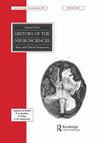Then there were 12: The illustrated cranial nerves from Vesalius to Soemmerring
IF 0.3
3区 哲学
Q3 HISTORY & PHILOSOPHY OF SCIENCE
引用次数: 1
Abstract
ABSTRACT In the second century ce, Galen described seven pairs of cerebral nerves. He did not name the nerves, nor did he illustrate his work. Galen’s descriptive texts survived until the mid-sixteenth century, when anatomists, influenced by the artistic and scientific revolution of the Renaissance, began a reformation in anatomical research. They closely observed their own dissected material and conveyed their results not only in words but commonly by lavish drawings. Many of the great anatomists reexamined the cerebral nerves, adding descriptive text or changing the classification. In 1778, Thomas Soemmerring (1755–1830) named 12 pairs of cerebral nerves upon which the modern cranial nerve nomenclature is based. Soemmerring matched his text with clear, decisive illustrations. This article describes the works of some of the great artists in the period from Vesalius to Soemmerring and how they used illustration to supplement and provide clarity for their textual descriptions of the cranial nerves.然后是12:图示的从维萨留斯到索默林的颅神经
摘要公元二世纪,盖伦描述了七对大脑神经。他没有说出神经的名字,也没有说明他的工作。盖伦的描述性文本一直保存到16世纪中期,当时解剖学家受到文艺复兴时期艺术和科学革命的影响,开始了解剖研究的改革。他们仔细观察自己解剖的材料,不仅用文字,而且通常用奢华的绘画来传达他们的结果。许多伟大的解剖学家重新检查了大脑神经,增加了描述性文本或改变了分类。1778年,托马斯·索默林(1755-1830)命名了12对脑神经,现代脑神经命名法就是基于这些神经命名的。Soemmering用清晰、果断的插图来匹配他的文本。本文描述了从维萨留斯到索默林时期的一些伟大艺术家的作品,以及他们如何使用插图来补充和澄清他们对颅神经的文本描述。
本文章由计算机程序翻译,如有差异,请以英文原文为准。
求助全文
约1分钟内获得全文
求助全文
来源期刊

Journal of the History of the Neurosciences
社会科学-科学史与科学哲学
CiteScore
1.00
自引率
20.00%
发文量
55
审稿时长
>12 weeks
期刊介绍:
The Journal of the History of the Neurosciences is the leading communication platform dealing with the historical roots of the basic and applied neurosciences. Its domains cover historical perspectives and developments, including biographical studies, disorders, institutions, documents, and instrumentation in neurology, neurosurgery, neuropsychiatry, neuroanatomy, neurophysiology, neurochemistry, neuropsychology, and the behavioral neurosciences. The history of ideas, changes in society and medicine, and the connections with other disciplines (e.g., the arts, philosophy, psychology) are welcome. In addition to original, full-length papers, the journal welcomes informative short communications, letters to the editors, book reviews, and contributions to its NeuroWords and Neurognostics columns. All manuscripts are subject to initial appraisal by an Editor, and, if found suitable for further consideration, full- and short-length papers are subject to peer review (double blind, if requested) by at least 2 anonymous referees.
 求助内容:
求助内容: 应助结果提醒方式:
应助结果提醒方式:


